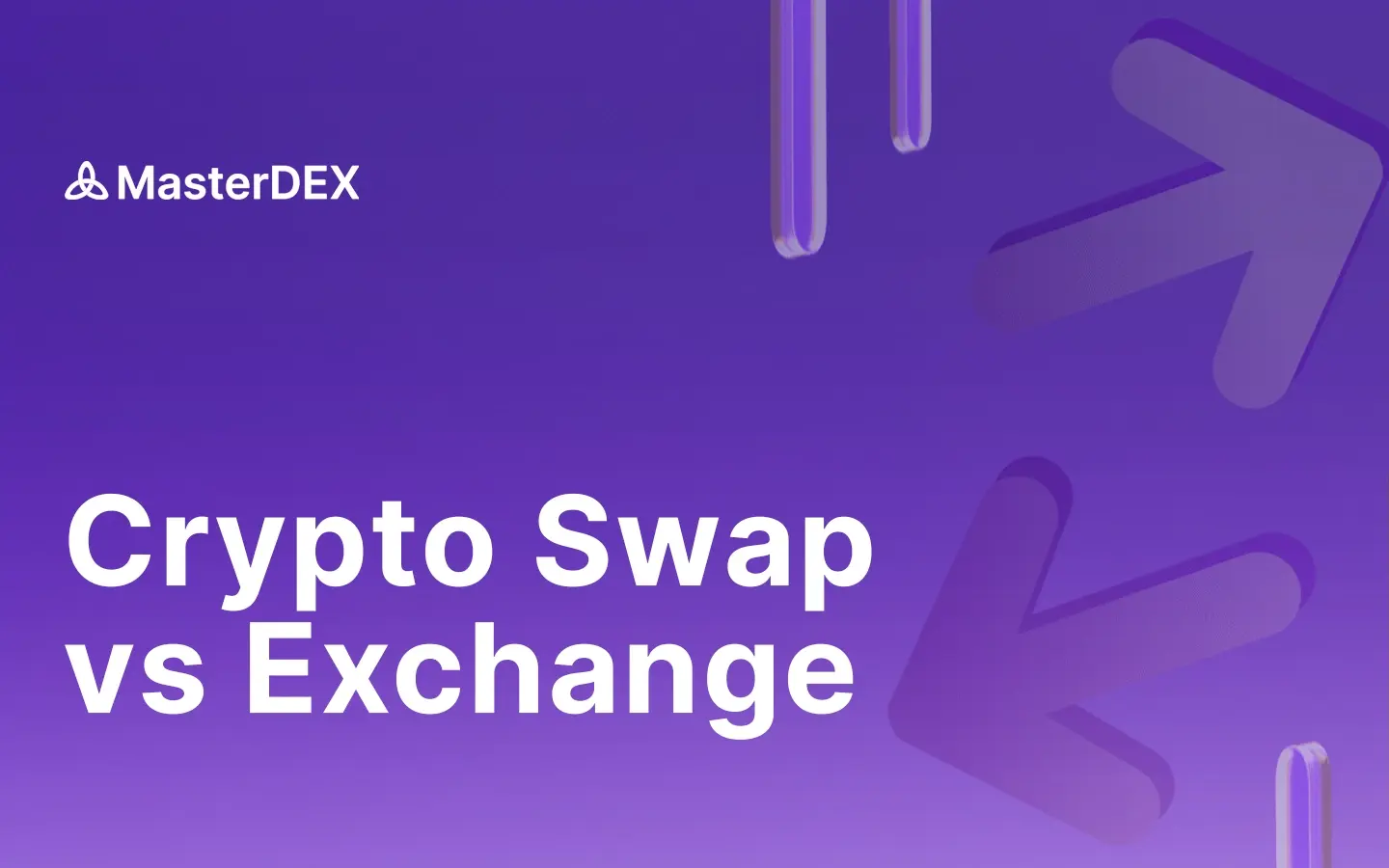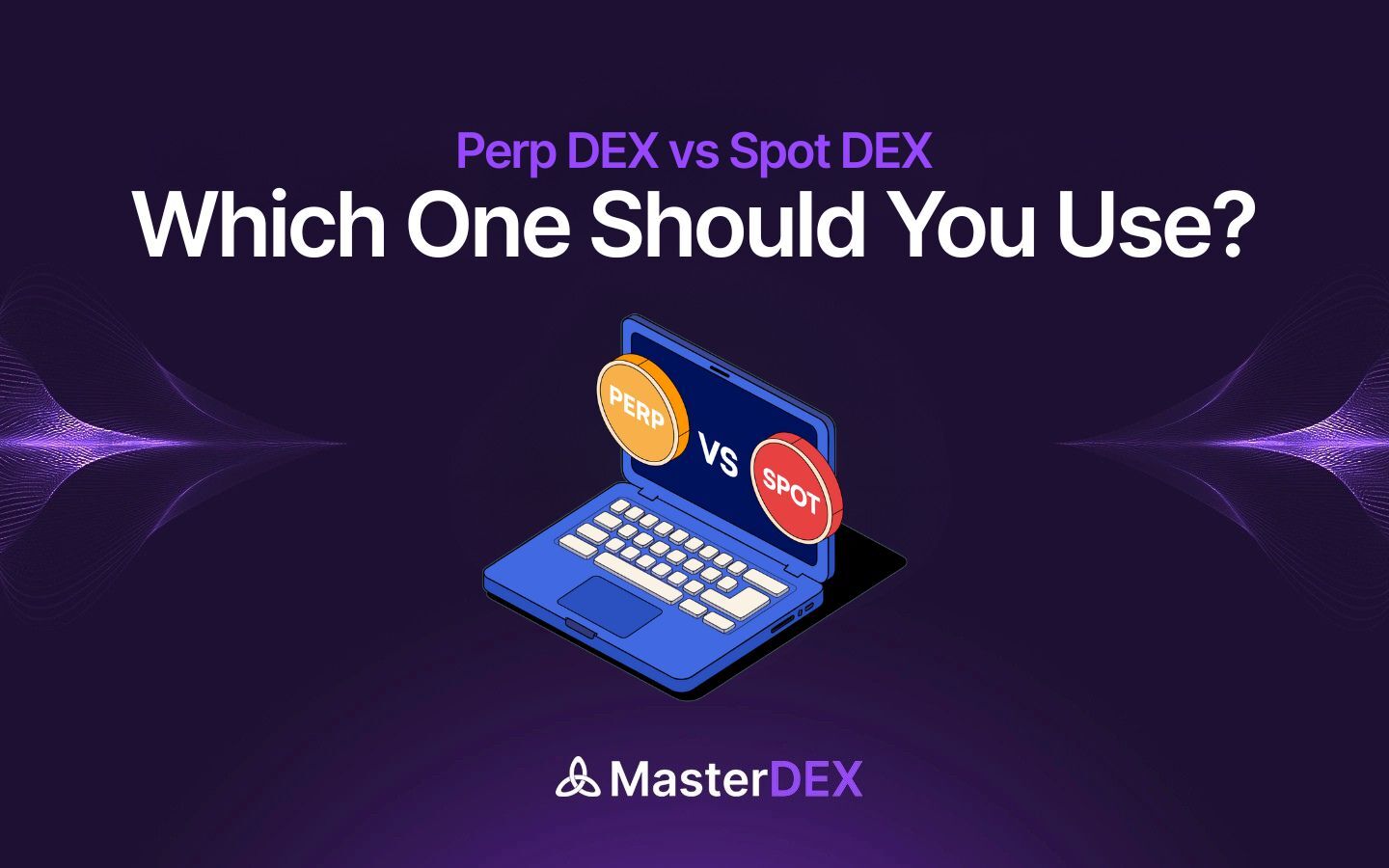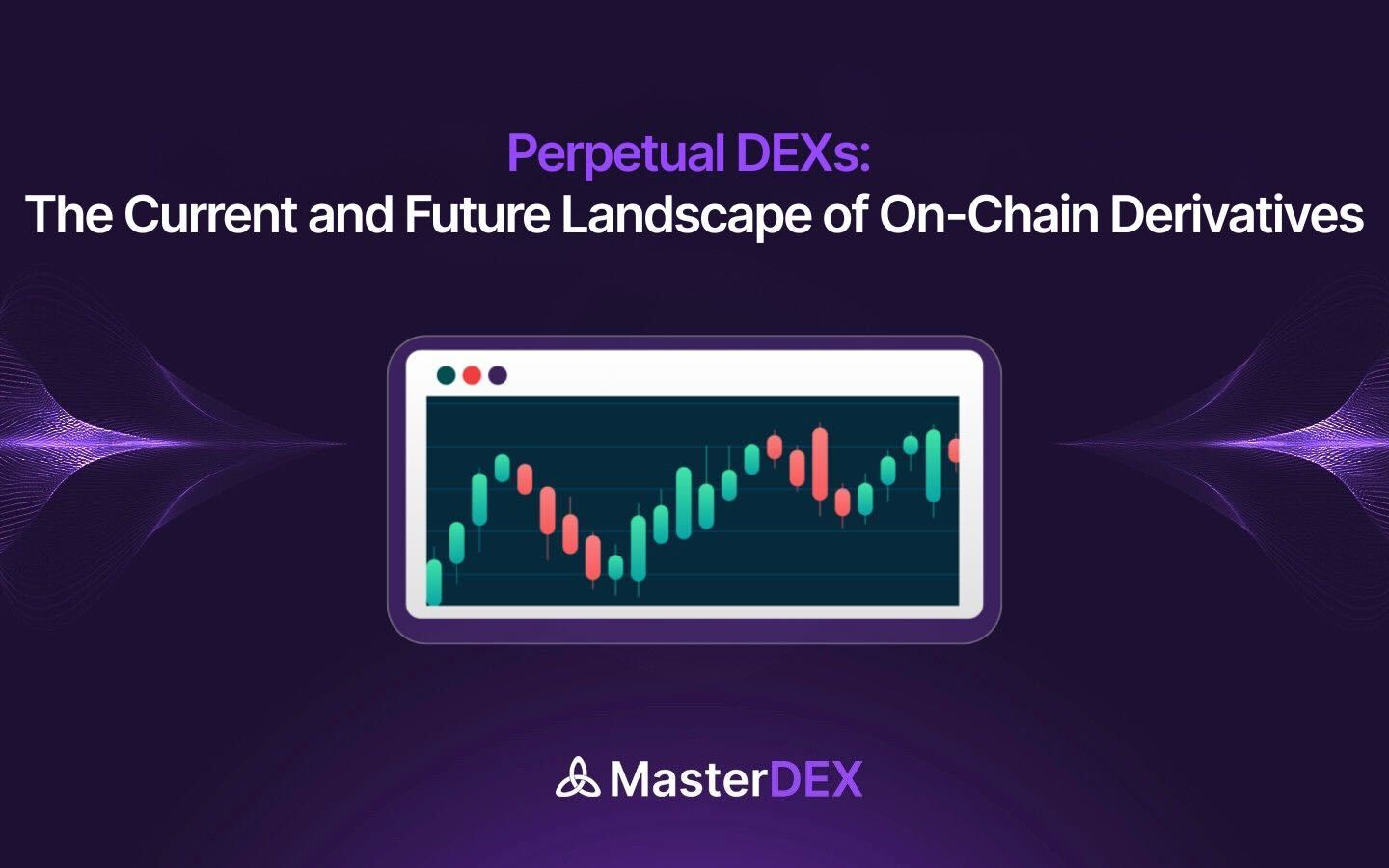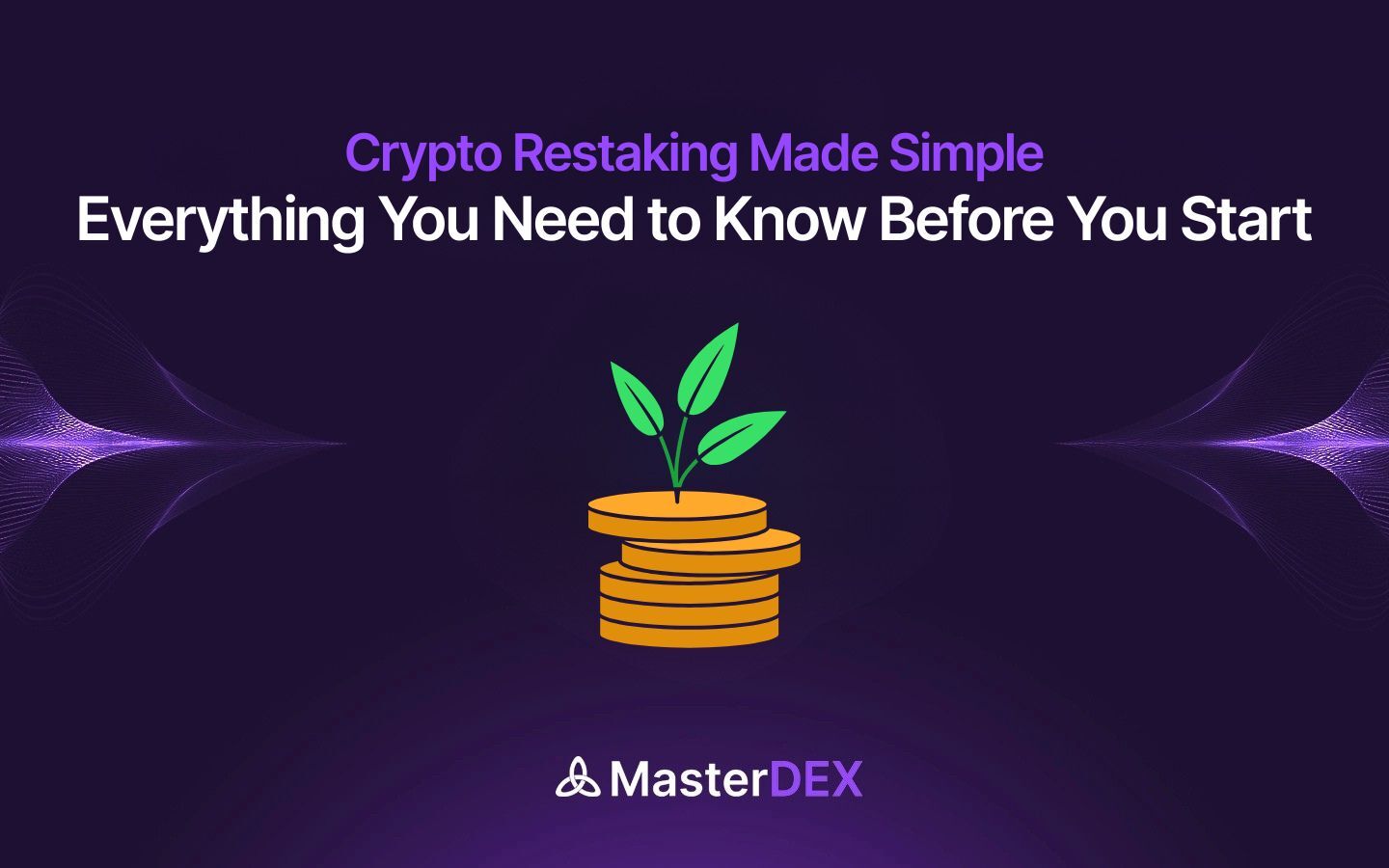Cryptocurrency trading has become a mainstream investment choice, attracting both retail traders and institutional investors. As the demand for secure and efficient trading platforms grows, two commonly used methods emerge: crypto swap vs exchange. While both facilitate the exchange of digital assets, they operate differently and serve distinct purposes, making it crucial for traders to understand which option best suits their needs.
This article provides an in-depth comparison of crypto swaps and crypto exchanges, detailing their mechanisms, advantages, and challenges so you can make informed decisions when trading digital assets.
Table of Contents:
ToggleWhat Is a Crypto Swap?
A crypto swap refers to directly exchanging one cryptocurrency for another without involving an intermediary fiat currency. Unlike traditional trading, where you might have to sell a cryptocurrency into a fiat currency before purchasing another, swaps allow you to exchange one token for another instantly.
What Is a Crypto Exchange?
A crypto exchange is a trading platform where users can buy, sell, and trade cryptocurrencies, often using fiat currencies as intermediaries. Unlike swaps, exchanges often require an intermediary step—converting one asset into fiat before purchasing another.
Types of Crypto Exchanges
Crypto exchanges provide a structured marketplace that can be centralized (CEX) or decentralized (DEX).
Centralized Exchange (CEX)
- Operated by a centralized authority that controls order execution and asset storage.
- Requires KYC (Know Your Customer) verification.
- Examples: Coinbase, Binance, Kraken, etc.
Decentralized Exchange (DEX)
- Operates on a blockchain without a central authority.
- Utilizes smart contracts for automated trading.
- Examples: MasterDEX, Uniswap, PancakeSwap, etc.
CEX vs DEX Comparison
| Feature | Centralized Exchange (CEX) | Decentralized Exchange (DEX) |
| Control Over Funds | Funds are held by the exchange | Users retain full control of their funds |
| KYC Requirement | Mandatory KYC verification | No KYC required; anonymous trading |
| Security | Prone to security breaches due to centralized storage | More secure as funds remain in user wallets |
| Liquidity | High liquidity due to large user base | Lower liquidity, can experience slippage |
Now that we have understood crypto swap vs exchange, let’s delve deeper and understand their working mechanisms.
How Do Crypto Swaps Work?
Crypto swaps facilitate the instant exchange of one cryptocurrency for another without intermediaries. This process is particularly useful for traders looking for quick conversions without dealing with fiat on-ramps or long waiting times.
Key Features of Crypto Swaps
- Direct crypto-to-crypto transactions without fiat conversion.
- Faster execution since there is no need to place an order and wait for it to be matched.
- Lower transaction costs, as there are fewer steps involved.
- Often conducted on DEXs or wallet-integrated swap platforms.
Steps to Perform a Crypto Swap
- Select Trading Pair – Choose the two cryptocurrencies you want to swap.
- Enter Trade Amount – Specify how much of the first asset you wish to exchange.
- Confirm Transaction – The platform processes the swap based on the best available rate.
- Receive New Tokens – The swapped cryptocurrency is deposited into your wallet.
How Do Crypto Exchanges Work?
Crypto exchanges provide a marketplace where users can buy and sell cryptocurrencies through order books or automated market makers (AMMs).
Before diving into how exchanges function, let’s explore the two primary types of exchanges: centralized and decentralized.
What are Centralized Exchanges (CEXs)?
A centralized exchange acts as a middleman between buyers and sellers, facilitating transactions through an order book system.
- Users must create an account and complete KYC verification.
- Funds deposited on the platform are held by the exchange.
- Orders are executed through an order book, where buy and sell orders are matched.
Key Features of Centralized Exchanges
- User-Friendly Interface – Beginner-friendly and easy to navigate.
- High Liquidity – Large trading volumes ensure efficient trade execution.
- Customer Support – Provides assistance in case of issues.
Drawbacks of CEXs
- Requires KYC – Reduces privacy due to identity verification.
- Custodial Risk – Funds are stored on the exchange, which can be vulnerable to hacks.
- Higher Fees – Charges for trading, withdrawals, and other services.
What are Decentralized Exchanges (DEXs)?
A decentralized exchange (DEX) operates on a blockchain, allowing users to trade directly from their wallets.
DEXs eliminate the need for intermediaries by using smart contracts to execute trades automatically.
Key Features of Decentralized Exchanges
- Non-Custodial – Users retain control of their private keys.
- Privacy – No need for identity verification (KYC).
- Access to a Wide Range of Tokens – Trade new and lesser-known cryptocurrencies.
Challenges of DEX:
- Lower Liquidity – Smaller user base compared to CEXs.
- Technical Knowledge Required – Users must manage wallets, gas fees, and smart contracts.
- No Customer Support – Users are responsible for resolving any issues.
How DEX Operates?
In order to understand how exactly crypto swap vs exchange work, its important to understand the two primary trading models in DEXs: the Order Book Model and the Automated Market Maker Model (AMM). Let’s discuss them in detail now.
Order Book Model
The Order Book Model is a traditional trading mechanism where buy and sell orders are recorded in a ledger known as the order book. This model operates by matching limit orders (traders specifying the price at which they want to buy or sell) with corresponding market orders (trades executed at the current market price). It closely resembles the structure of stock exchanges, where prices are determined based on supply and demand. When a trader places an order, it remains open in the book until another trader agrees to the terms. This system works best for high-liquidity assets, ensuring fast order execution with minimal price fluctuations.
DEXs using the Order Book Model can operate in two ways: on-chain and off-chain.
- In on-chain order books, all order records are stored on the blockchain, ensuring full transparency but leading to higher gas fees and slower execution.
- In contrast, off-chain order books manage orders externally while settling transactions on-chain, providing better speed but introducing an element of centralization.
While order books offer precise price control and limit order functionality, they can suffer from low liquidity issues, making it difficult to execute trades instantly, especially for less popular tokens. Platforms like dYdX, Loopring, and Serum use this model to offer a CEX-like trading experience with added decentralization.
Automated Market Maker (AMM) Model
The Automated Market Maker (AMM) Model revolutionized decentralized trading by eliminating the need for order books. Instead of matching buyers and sellers, AMM DEXs rely on liquidity pools to facilitate trades. These pools are funded by liquidity providers (LPs) who deposit equal amounts of two cryptocurrencies into a pool, creating a trading pair (e.g., ETH/USDT). When a user swaps tokens, they trade directly with the pool rather than another trader. The price of assets is automatically adjusted based on supply and demand using different mathematical algorithms. This model allows for instant swaps, making it ideal for fast transactions and eliminating the delays of order book matching.
One of the biggest advantages of the AMM model is its accessibility and ease of use, enabling anyone to become a liquidity provider and earn a share of trading fees. However, AMMs face risks such as impermanent loss, where liquidity providers may experience reduced profits if token prices fluctuate significantly. Additionally, slippage can occur, meaning traders might receive a worse rate if a pool has low liquidity.
Order Book vs. AMM Model: A Quick Comparison
| Feature | Order Book Model | AMM Model |
| Order Matching | Buyers and sellers place orders, matched by the exchange | Trades are executed via liquidity pools |
| Execution Speed | Can be slow if there are no matching orders | Instant trades with available liquidity |
| Liquidity Management | Relies on active traders placing buy/sell orders | Uses liquidity pools contributed by users |
| Gas Fees | Higher for on-chain order books | Lower fees due to automated trading |
| Price Mechanism | Determined by market supply and demand | Controlled by smart contract formulas |
| Risk Factors | Low liquidity can cause failed trades | Impermanent loss risk for liquidity providers |
Concluding Lines: Which One Should You Choose?
Now that we’ve explored crypto swap vs crypto exchange in detail, let’s distinguish them clearly, as understanding their differences will empower you to trade smarter and make informed decisions in the ever-evolving crypto market.
| Feature | Crypto Swap | Crypto Exchange |
| Trading Method | Direct crypto-to-crypto conversion | Uses order books or AMMs |
| Intermediary | No fiat involved | Often requires fiat for conversions |
| Speed | Instant transactions | Can take longer due to order execution |
| Fees | Lower fees, fewer steps | Higher fees due to multiple processes |
| User Control | Full control over assets | Funds held by exchange (CEX) |
| Liquidity | May have limited liquidity | Higher liquidity on CEXs |
| Best For | Quick token swaps | Market trading, fiat conversions, advanced tools |
In a nutshell, both crypto swaps and crypto exchanges offer unique advantages and serve different trading needs.
- If you value speed, privacy, and cost efficiency, crypto swaps on DEXs are the best option.
- If you need high liquidity, fiat access, and customer support, crypto exchanges (especially CEXs) provide a structured trading environment.
Ultimately, the choice depends on your trading goals, risk tolerance, and platform preferences.



